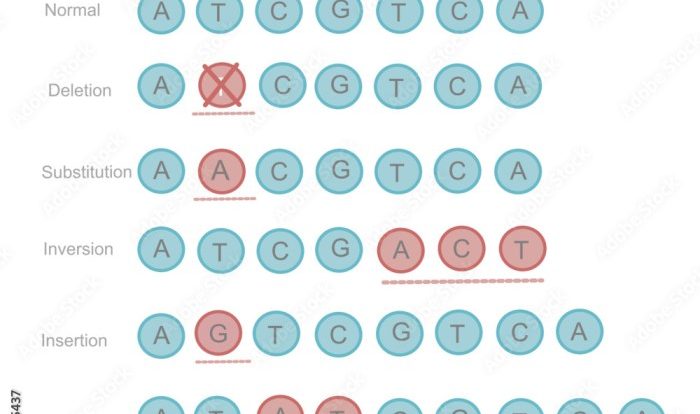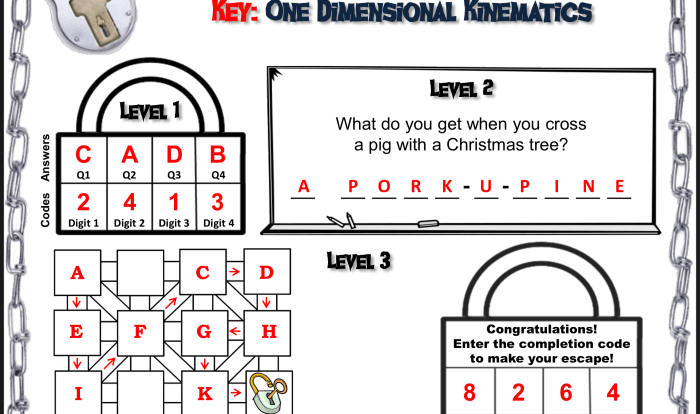Embark on a captivating journey into the realm of genetics with our comprehensive Punnett square worksheet and answers. This invaluable resource unveils the secrets of genetic inheritance, empowering you to understand the fundamental principles of dominant and recessive traits, probability and genotype ratios, and real-world applications of Punnett squares.
Prepare to unravel the mysteries of DNA and unlock the power of genetic prediction.
Delve into the fascinating world of Punnett squares, where we explore their purpose and usage, unravel the concepts of dominant and recessive traits, and master the calculation of probability and genotype ratios. With practical examples and interactive practice scenarios, this guide will transform you into a Punnett square pro.
Punnett Square Basics

A Punnett square is a tool used in genetics to predict the possible genotypes of offspring from parents with known genotypes. It is a visual representation of the possible combinations of alleles that can be inherited from each parent.
A Punnett square is typically laid out as a grid, with the possible alleles from one parent listed along the top and the possible alleles from the other parent listed along the side. The squares in the grid represent the possible genotypes of the offspring.
Example
Consider a simple example of a Punnett square for a single gene with two alleles, A and a. The parents are both heterozygous for this gene, meaning that they each have one A allele and one a allele.
The Punnett square for this cross would look like this:
| A | a | |
| A | AA | Aa |
| a | Aa | aa |
The squares in the grid represent the possible genotypes of the offspring. There is a 25% chance of the offspring being homozygous dominant (AA), a 50% chance of being heterozygous (Aa), and a 25% chance of being homozygous recessive (aa).
Understanding Dominant and Recessive Traits
In genetics, traits are characteristics or features of an organism that are determined by the interaction of genes. Some traits are dominant, while others are recessive. Understanding the difference between dominant and recessive traits is crucial for predicting the inheritance patterns of traits in offspring.
Definition of Dominant and Recessive Traits
- Dominant trait:A dominant trait is a trait that is expressed in an individual who has at least one copy of the dominant allele for that trait. The dominant allele is represented by an uppercase letter (e.g., A).
- Recessive trait:A recessive trait is a trait that is only expressed in an individual who has two copies of the recessive allele for that trait. The recessive allele is represented by a lowercase letter (e.g., a).
Representation in Punnett Square
In a Punnett square, dominant alleles are placed on one side of the square, and recessive alleles are placed on the other side. The resulting genotypes and phenotypes of the offspring are determined by the combinations of alleles inherited from both parents.
Examples of Dominant and Recessive Traits
- In humans:Brown eyes are dominant over blue eyes, so an individual with at least one copy of the brown eye allele will have brown eyes.
- In plants:Tall stems are dominant over short stems, so a pea plant with at least one copy of the tall stem allele will have a tall stem.
Probability and Genotype Ratios
Determining the probability of offspring inheriting specific traits is crucial in understanding the principles of Punnett squares. The probability is determined by analyzing the possible combinations of alleles that can be passed from parents to offspring. Each parent contributes one allele for each trait, and the combination of these alleles determines the genotype of the offspring.
Calculating Probability
To calculate the probability of a specific genotype, multiply the probabilities of each allele being inherited from each parent. For example, if a heterozygous dominant parent (Aa) is crossed with a homozygous recessive parent (aa), the probability of the offspring inheriting the dominant allele (A) from the heterozygous parent is 1/2. The probability of inheriting the recessive allele (a) from the homozygous parent is 1. Multiplying these probabilities, we get 1/2 x 1 = 1/2, indicating a 50% chance of the offspring inheriting the dominant allele (Aa).
Genotype Ratios
Punnett squares can also be used to determine the different genotype ratios that can result from a particular cross. The genotype ratio refers to the proportions of different genotypes in the offspring population. For example, in a monohybrid cross between two heterozygous individuals (Aa x Aa), the Punnett square would yield a 1:2:1 genotype ratio, indicating that 25% of the offspring would be homozygous dominant (AA), 50% would be heterozygous (Aa), and 25% would be homozygous recessive (aa).
Example
Consider a cross between a homozygous dominant parent (BB) and a heterozygous recessive parent (Bb). The Punnett square would be as follows:“`| B | B |
——
| Bb | Bb || Bb | Bb |“`The genotype ratio in this case would be 1:1, indicating that 50% of the offspring would be heterozygous (Bb) and 50% would be homozygous dominant (BB).
Punnett Square Applications
Punnett squares are invaluable tools in various fields, including genetic counseling and breeding programs. They enable professionals to predict the potential outcomes of genetic crosses and guide decision-making in breeding and healthcare.
Predicting Genetic Cross Outcomes
By analyzing the genotypes of parents, Punnett squares help predict the probability of offspring inheriting specific traits. This information is crucial for breeders seeking to develop animals or plants with desired characteristics. In genetic counseling, Punnett squares aid in understanding the inheritance patterns of genetic disorders and assessing the risk of passing on certain traits.
Real-World Applications
- Animal Breeding:Breeders use Punnett squares to predict the likelihood of desirable traits, such as increased milk production in cows or faster growth rates in livestock.
- Plant Breeding:Punnett squares assist in developing new plant varieties with specific traits, such as disease resistance or improved crop yield.
- Genetic Counseling:Punnett squares are used to estimate the probability of inheriting genetic disorders, helping individuals and families make informed decisions about family planning and medical care.
- Forensic Science:Punnett squares can be used to determine the likelihood of an individual being related to a suspect in criminal investigations.
Punnett Square Practice
Practice Punnett Squares
To practice using Punnett squares, consider the following scenarios:
- A pea plant with genotype Aa is crossed with a pea plant with genotype aa. Determine the possible genotypes and phenotypes of their offspring.
- A brown-eyed woman (BB) marries a blue-eyed man (bb). What is the probability that their first child will have brown eyes?
- A heterozygous black cat (Bb) is crossed with a white cat (bb). What is the expected genotype ratio of their offspring?
Expected Genotype Ratios
The expected genotype ratios for each scenario are as follows:
| Scenario | Genotype Ratio |
|---|---|
| 1 | 1 Aa : 1 aa |
| 2 | 1 BB : 1 Bb |
| 3 | 1 Bb : 1 bb |
Punnett Square Extensions: Punnett Square Worksheet And Answers
While Punnett squares provide a valuable tool for understanding inheritance patterns, they have certain limitations. Advanced Punnett square concepts, such as multiple alleles and incomplete dominance, can extend their applicability.
Multiple Alleles
Punnett squares typically consider traits with only two alleles. However, some traits may have multiple alleles. For instance, the ABO blood group system in humans has three alleles (A, B, and O). A Punnett square for such traits involves more complex configurations, requiring careful consideration of all possible allele combinations.
Incomplete Dominance, Punnett square worksheet and answers
In incomplete dominance, neither allele is dominant over the other. Instead, the heterozygous genotype exhibits a phenotype that is intermediate between the two homozygous phenotypes. For example, in snapdragons, the homozygous genotype for red flowers (RR) produces red flowers, the homozygous genotype for white flowers (rr) produces white flowers, and the heterozygous genotype (Rr) produces pink flowers.
Limitations and Supplementation
Punnett squares have limitations in predicting inheritance patterns for traits influenced by multiple genes, environmental factors, or complex interactions. In such cases, other genetic tools, such as pedigrees, karyotyping, and DNA analysis, can provide more comprehensive information.
Additional Resources
- Genetics for Plant Breeders (by Allard): https://link.springer.com/book/10.1007/978-1-4615-0634-9
- Introduction to Genetic Analysis (by Griffiths, Wessler, Lewontin, and Carroll): https://www.ncbi.nlm.nih.gov/books/NBK22186/
- Genetics: Analysis and Principles (by Hartwell, Hood, Goldberg, Reynolds, Silver, and Veres): https://www.ncbi.nlm.nih.gov/books/NBK9886/
FAQ Section
What is the purpose of a Punnett square?
A Punnett square is a visual tool used to predict the possible genotypes of offspring based on the genotypes of their parents.
How do I determine the probability of a specific genotype in a Punnett square?
Multiply the probabilities of each allele being inherited from each parent.
What is the difference between a dominant and recessive trait?
A dominant trait is expressed in individuals with at least one copy of the dominant allele, while a recessive trait is only expressed in individuals with two copies of the recessive allele.

